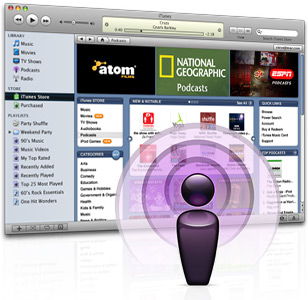
BusinessKnowHow: Cash. Most people want more. When running a small business it’s particularly important to monitor how cash is coming in and how much cash is going out. This month, I’d like to take a few minutes to share some ideas on cash flow management as in how you can keep more cash in your business for a longer time.
Periodically re-evaluate your expenses. If you are anything like me your business changes and shifts every 4-6 months and this prompts a necessary re-evaluation of the products and services you are using to run your business.
Hold off on electronics and other purchases for as long as reasonably possible. If you need to invest in a new computer or printer or copier you can save money without sacrificing quality if you can wait a few months to purchase.
Use credit responsibly. If you have access to lines of credit you can use these to finance business purchases rather than paying cash outright. This, in many cases, can give you 20-30 extra days on your money enabling you to save or invest it for maximum return.
Watch out for hidden fees. Yes, there are some “costs” of doing business. However, at least once every 6 months, review what you’re paying for services like office cleaning, credit card transactions, long distance calls, liability insurance, etc.
Get paid more. Another way to manage your cash flow is to charge more for what you do. Institute planned increases in your payment rates over a year or two. Raising your fees as a cash flow strategy only works, though, if your spending remains less than your earnings.
Buy in bulk. This applies to physical products/supplies as well as non-physical ones (such as services). You can often realize a significant cost savings on items bought in bulk especially if you were going to buy them anyway.
Keep track of your discounts and other rewards. We are inundated with special offers, promotions and discounts. Use these wherever you can.
Give special consideration to your customers who pay early and in full. Customers who routinely pay their bills ahead of time, and who are rewarded for doing so, are more likely to continue this behavior which results in more cash inflow for you.
Invoice before, or soon after, performing a service. Don’t wait to send out bills just once every 30 days. This can delay cash inflow for months.
Invest in the growth of yourself and your business. Spend money to market your business, invest in your own learning and get help as soon as possible. The more you put into your business, in a thoughtful and measured way, the more you will get out of it.
Cash Flow Management [BusinessKnowHow]
Author: Pamela Swift
Small Business Podcasts

Small Business Trends Radio: Sometimes it can be hard to determine which of the many small business podcasts will provide what you need. So much audio, so little time.
So we have taken the guesswork out of it for you. We narrowed it down to 100 informative podcasts for small business owners and entrepreneurs.
Most of the following podcasts specifically target a small business audience. Others have a broader business focus. All, however, are relevant to business owners and entrepreneurs. Explore and listen, and see what you think of this list.
100 Small Business Audio Podcasts [Small Business Trends Radio]
Pitch In The Elevator

USATODAY: Now my friend was going to a social event, but in business, every entrepreneur needs to have his or her “elevator pitch” ready. Whether you’re networking at a business function, exhibiting at a trade show, trying to raise money, or meeting a prospective client, the first question they’re going to ask is “What do you do?”
You’ve got to have a clear, concise way to answer that question — and that’s your “elevator pitch.”
It takes quite a bit of thinking to decide which aspects of your business to mention. Even more frustrating, you have to decide which parts of your company to leave out. Often these can be the things you’re most excited about — a new technology, a great location, the fact you get to go to Europe on buying trips. But if they’re not central to the core of your business, then they don’t belong in an elevator pitch.
The biggest mistake most people make when answering the question “What do you do?” is that they take that question too literally and start describing exactly what they do. I remember one woman who sold advertising who described in detail what she did: came to the client’s office, picked up their ad copy, went to the printer, sent back proofs, and on and on.
Your elevator pitch must not only be short, it must be clear. Unless you’re in a highly technical field, your neighbor or grandmother should be able to understand your business well enough to be able to describe it to someone else. After all, you want Grandma out there marketing for you too, don’t you?
Your elevator pitch should touch — very briefly — on the products or services you sell, what market you serve, and your competitive advantage.
A good ‘elevator’ pitch will lift your business [USATODAY]
Johnnie’s Hot Dogs

The Johnnie’s Dog House Franchise is the newest addition to the growing fast-casual restaurant franchises. Over the past three years, Johnnie’s Dog House customers have enjoyed the best hot dogs brought to them from around the world, and a variety of menu selections of “The Foods You Crave!” Their food, coupled with a comfortable-nostalgic atmosphere has made Johnnie’s Dog House a destination restaurant for friends and families of all ages.
With an eye towards the future, Johnnie’s Dog House has developed multiple business formats that compete in the booming fast-casual restaurant business, both locally and nationally. The fast-casual restaurant is a natural fit in Residential Business Districts, Town & Lifestyle Centers, and Beach & Shore Communities. The Fully Self-Contained Mobile Kiosk Solution is well suited to locations such as airports, college campuses, malls, retail outlets, hotels, tourist attractions, shopping centers, transportation centers, and casinos. Starting in August 2007, Johnnie’s Dog House will begin taking franchise applications from their newly re-designed website.
Johnnie’s Dog House
Create Effective Mission Statements

SmallFuel Marketing: I was recently at a rather large expo, and I decided to keep track of the many different mission statements I came across. I also kept track of the responses we got at our booth with our mission statement. Out of all the data, there was one glaring trend.
Mission statements are so common place and so exaggerated that no one even listens to them. What went wrong? How do we fix it?
1. Mission statements are too long
If you want anyone to listen until the end of your statement, it needs to be short and sweet.
2. Mission statements are too complicated
With everyone telling small businesses how to write a mission statement (me too, evidently), they have become filled with gibberish as each writer tries to satisfy every condition of a successful mission statement. Your mission statement should be focused to the point, which brings us to the next bullet.
3. Mission statements are too much about companies and not enough about customers
Many companies have mission statements that get into company heritage and history—can you think of anything more boring? The entire point of your mission statement needs to be about your customer. What are they going to get from you. Repeat after me: “My mission is about my customer.”
4. Less mission, more mantra
Company mission statements are generally just a paragraph of exaggeration that is brought out in front of customers, only to disappear before getting back to the office. Your small business needs to live and breath your mission. Everything you do and say should reinforce your mission.
If you don’t live by your mission, people will know immediately that you’re not being sincere. In a world of sensationalism, you need your mission to be as sincere and trustworthy as possible.
Mission Statements Don’t Work, Get Something That Does [SmallFuel Marketing]